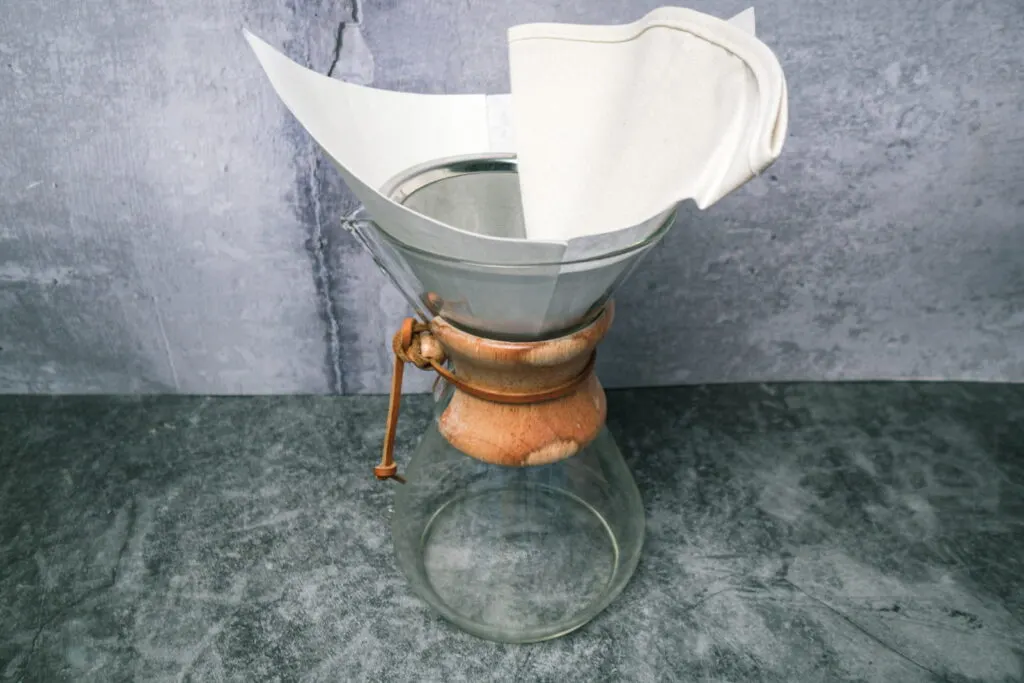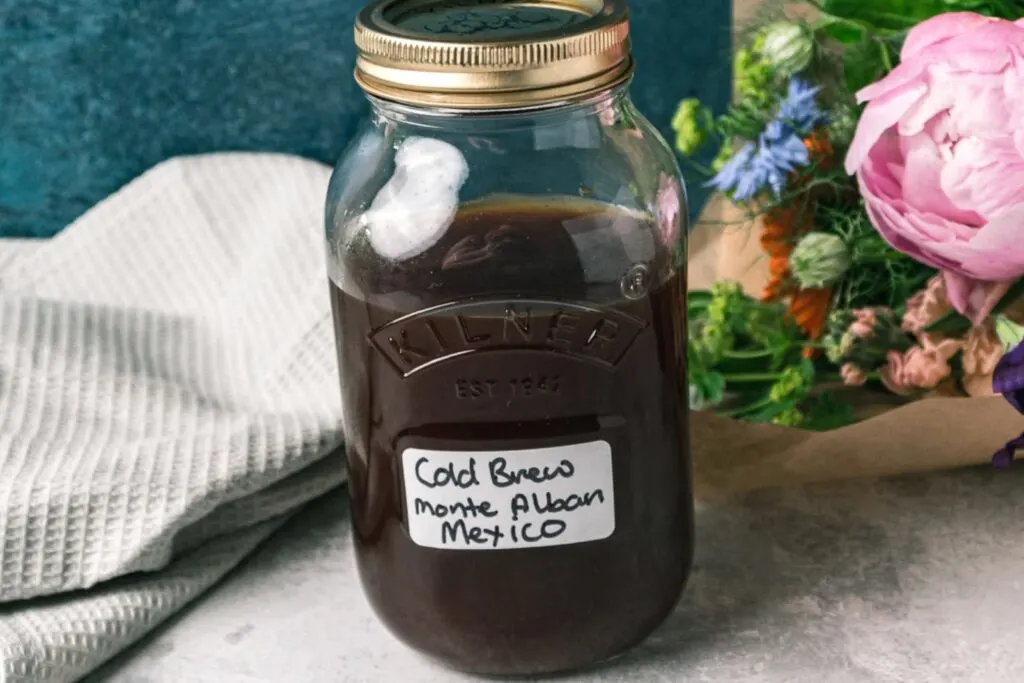I’m sure you’ve seen it in a café a couple of times, or maybe in a restaurant or on someone’s Instagram – what’s the deal with that little piece of lemon you sometimes find on the side with your cup of espresso? Who invented this, for what purpose, and what benefit does it give?
Espresso with a garnished slice of lemon is called Espresso Romano. It is an American coffee, not Italian. The lemon’s acidity helps to balance the espresso’s bitter and intense taste. Using lemon can help create a smoother and more robust flavor in the coffee as a result.
If you’re interested in the mystery of this fascinating beverage, want to increase your coffee knowledge, or are just interested in picking up some awesome trivia, this post is for you. We’ll discuss the history and origins of Espresso Romano, how to make it properly, and the benefits of drinking it as opposed to a regular espresso.
Disclaimer: Hi! this post may contain affiliate links which will take you to online retailers that sell products and services. If you click on one and buy something, I may earn a commission, see my Affiliate Disclosure for more details.

What Exactly is Espresso Romano?
Espresso Romano is a standard cup of espresso coffee that is served with lemon. Although just the peel of the lemon is traditional, you can find this drink served with whole wedges or slices. Be prepared for exciting garnishes as well as your barista might feel creative.
Furthermore, Espresso Romano can be served either hot, cold, or on the rocks. Sometimes you can find it offered with an aniseed liqueur, which complements the flavor spectacularly well. Espresso Romano is typically not served with milk or cream, though, as the lemon can curdle it and ruin the flavor entirely.
Typically just twisting the peel over the coffee and then rubbing it on the rim is enough. Or, if you have a lemon segment, you can try squeezing the juice into the coffee, but only a little at a time. Remember that lemon is strong. A little goes a long way.
If you are served Espresso Romano, and you do use the lemon, it is often a good idea to add some brown sugar. Although many people do enjoy an intense black coffee, the extra lemon can make it very sour. Here the sugar balances that out.
The Origins of Espresso Romano
For a simple beverage, Espresso Romano has a surprisingly large number of origin stories. People have said it’s a traditional Italian beverage, or it was invented by the Allies in WW2, or even that it’s just a cheap and easy way to hide the taste of an overly bitter or cheap cup of espresso.
In Italy
Although it’s unlikely that the Espresso Romano we know it here in America began in Europe, that is undoubtedly an idea that’s been voiced before. It is certainly possible that an Italian restaurateur merely had a passion for some citrus in his coffee.
Espresso Romano might have roots in Southern Italy, specifically in Naples, Cagliari, and Amalfi. This area is famed for its lemon production, and the Italians of this region enjoy adding their signature limoncello liqueur to their coffees. As such, sometimes, they do garnish their coffee with a piece of lemon to continue the theme.
Although it has Romano in the name, we’re sure that this coffee has nothing to do with the city of Rome itself though. Authentic Roman espressos are more likely to be served with chilled water, milk or cream, or even a shot of strong liqueur.
During WW2
Because of the war, European countries, such as France, Italy, or Greece, experienced severe shortages of otherwise common household goods. Due to this, the stores and restaurants had to make substitutions to meet the demand created by the allied soldiers who had liberated their homelands.
One such substitution was using lemon juice instead of water as a disinfectant, often to clean coffee cups so the water could be saved for the coffee itself. When the soldiers then ordered their espressos, the leftover peels were served on the side.
Right Here in America
We discovered that the most likely history of the Espresso Romano is that it was just invented in America. After the introduction of espresso to America, many cafes started to offer them on the menu. However, few restaurants could actually make a cup of espresso well.
Adding lemon proved to be an easy way to hide the taste of a bad espresso. The acidity balanced out the mediocre coffee’s bitterness and intensity and appeared exotic as well. Using a naturally sour but fresh flavor also disguised the sourness associated with stale beans.
This technique naturally took off and became very popular. Of course, Espresso Romano tastes good here. The lemon’s freshness even complements a good cup of espresso too. The Italian origin was tacked on later to popularize this beverage further.
Why Should You Drink Your Espresso with Lemon?

Espresso Romano has a unique and distinctive flavor. This does depend on your palette. Still, many say it adds some much-needed sweetness and balance to even a well-made espresso. The citrus aroma and bright yellow color of the lemon also adds a nice pop to the drink.
The lemon itself can also be a palette cleanser in its own right. Much like a glass of cold water, sucking on a piece of lemon takes away the espresso’s aftertaste. Also, it can cleanse your palette so you can appreciate the full flavor of the coffee.
Drinking Espresso Romano also makes you look classy. Like it or not, many cafes serve their standard espresso with lemon now. However, if you’re the person who knows exactly what to do with that garnish, you’ll stand out. It’s sort of European, after all, very sophisticated.
Others have a more straightforward answer – Espresso Romano is a hangover cure. The caffeine in the coffee wakes you up and kills the pain of your headache, while the lemon aids digestion and suppresses your nausea.
How to Make Espresso Romano Properly
As long as you can brew a standard cup of espresso decently, Espresso Romano is effortless to make. Furthermore, precisely because the lemon hides any mediocre flavors, you don’t need top-quality coffee either. You could even use pods or capsules if you want.
Once you have your espresso, slice the lemon as you so see fit. However, only using just the peel is standard, and I recommend that first before you start experimenting. Once you’ve got the hang of it though, go crazy. Espresso Romano is a great way to impress your guests.
If you do want to try a genuinely top-notch Espresso Romano, I recommend a Sorrento lemon. These Italian lemons have a distinct flavor that can hold its own alongside a good espresso.
Does Espresso Really Need a Garnish Though?
Honestly, espresso doesn’t need a garnish. Adding lemon is simply an excellent way to improve the drink for certain people. Of course, if you don’t like the taste, you have to use the lemon at all. Keep on ignoring it. It is okay. It’s a lemon. It doesn’t have feelings.
If you like your espressos pure, this probably isn’t for you. Also, for high-quality espressos, the lemon isn’t necessary either as the coffee should already be well-balanced. So it wouldn’t need the help from extra acidity or freshness.
Espresso with lemon is a delicious variant of the typical cup of espresso coffee. The lemon itself is used as a garnish. It can add citrus notes to your beverage to balance out its bitterness and intensity. Also known as Espresso Romano, this drink is probably American in origin, although its style has roots back in Italy. I highly recommend you try one.

Espresso with Lemon
Espresso with lemon is a delicious variant of the typical cup of espresso coffee. The lemon itself is used as a garnish. It can add citrus notes to your beverage to balance out its bitterness and intensity.
Ingredients
- 1 -2 Shots of Espresso
- 1 Slice of Lemon
Instructions
- Brew 1-2 shots of Espresso.
- Once you have your espresso, slice the lemon as you so see fit. However, only using just the peel is standard, and I recommend that first before you start experimenting.
- If you do want to try a genuinely top-notch Espresso Romano, I recommend a Sorrento lemon. These Italian lemons have a distinct flavor that can hold its own alongside a good espresso.
Nutrition Information:
Yield: 1 Serving Size: 1Amount Per Serving: Calories: 10Total Fat: 0gSaturated Fat: 0gTrans Fat: 0gUnsaturated Fat: 0gCholesterol: 0mgSodium: 12mgCarbohydrates: 2gFiber: 0gSugar: 0gProtein: 0g
I am not a doctor or a dietician. The information I have presented and written within this site is intended for informational purposes only.






